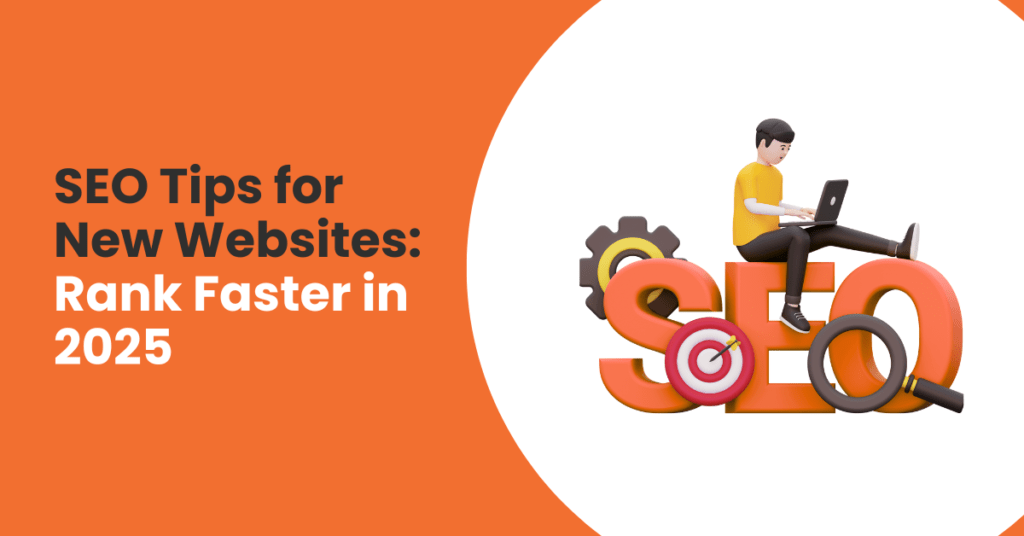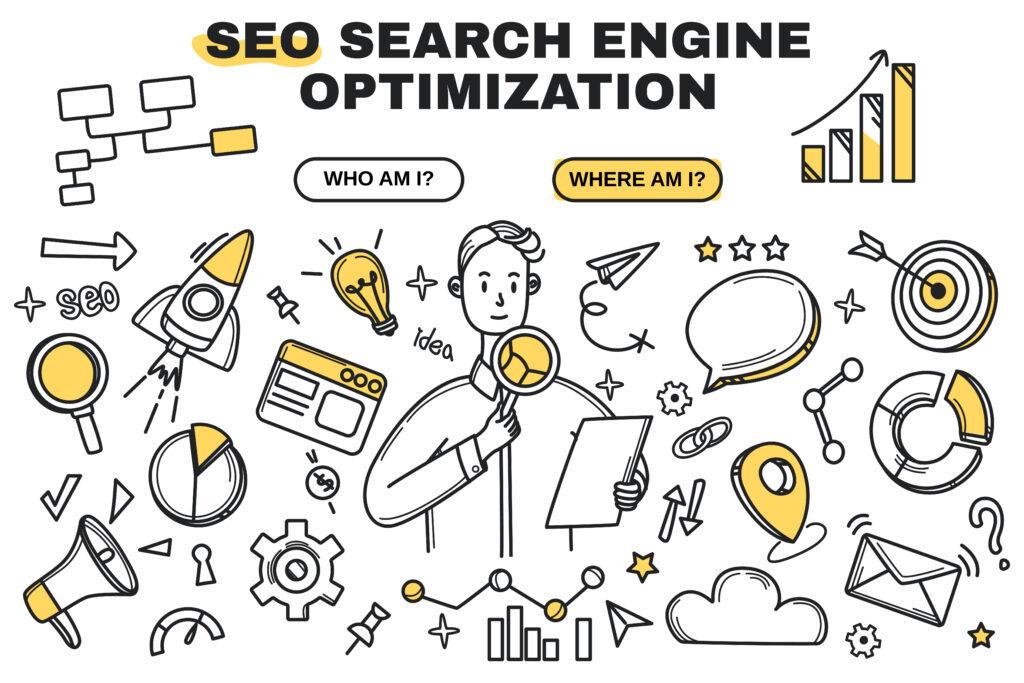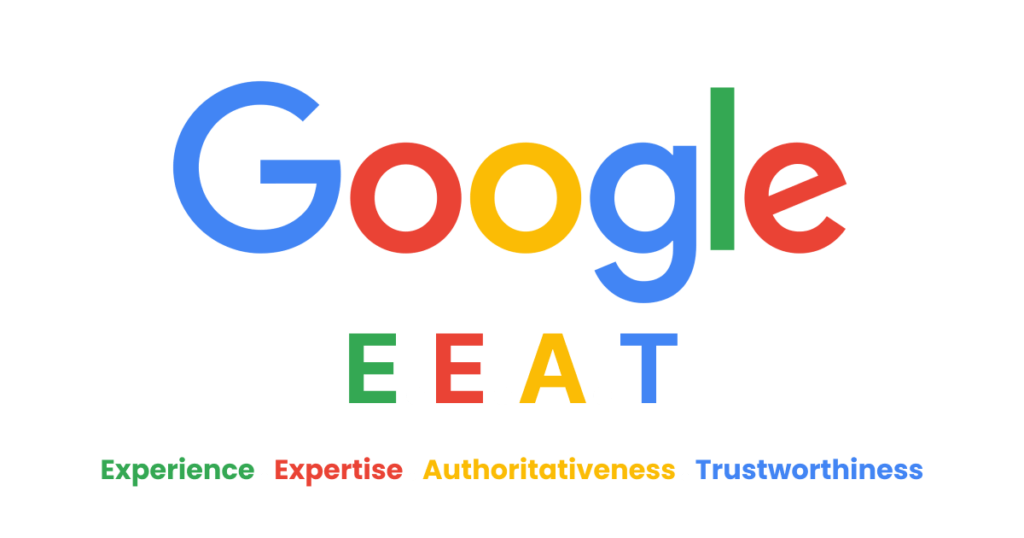SEO Tips for New Websites: Improving SEO Rank Faster in 2025

Do you know why SEO Rank is so important?
Without further words, let’s dig into it now.
This article is meant not only for marketing people who already understand SEO, but also it can be anyone who involved in website development like website developer and website designer!
Picture this scenario:
You’ve just launched your dream website. The design is perfect, the content is valuable, and you’re ready to share your knowledge with the world. You hit publish, expecting visitors to start flowing in, only to discover something sobering—Google doesn’t even know your website exists yet, let alone rank it on the first page.
This is the reality that every new website owner faces, and it’s one of the most challenging aspects of building an online presence.
Unlike traditional advertising where you can pay for immediate visibility, search engine optimization requires patience, strategy, and a deep understanding of how search engines evaluate and trust new websites.
But here’s the encouraging news.
While SEO for new websites is challenging, it’s far from impossible. The key lies in understanding that Google’s algorithms have evolved significantly over the years. Plus, there are so many free SEO tools that you can use!
In 2025, success isn’t about trying to outsmart the system or finding shortcuts—it’s about building genuine trust, delivering real value, and creating the kind of website that both users and search engines naturally want to recommend.
Also read: 5 Metrics to Track for Measuring Google Ads Success

Need to Understand the Challenge for New Website
Before diving into specific strategies, it’s crucial to understand why new websites face unique SEO challenges.
Think of Google’s ranking system like a recommendation network in the real world. When someone asks for restaurant recommendations, you’re more likely to trust suggestions from friends who have consistently given you good advice over the years rather than a complete stranger, no matter how enthusiastic they might be.
Search engines operate on similar principles. Established websites have what we call “domain authority”—a track record of providing valuable content, earning links from other reputable sites, and demonstrating expertise over time.
New websites, by definition, lack this history, which means they start at a significant disadvantage in the trust equation. However, this challenge also presents an opportunity.
Because established websites often become complacent or focused on broad, highly competitive topics, new websites can succeed by being more focused, more current, and more responsive to specific user needs that larger sites might overlook.
Also read: How to Convert Clicks to Customers? Guide to Optimizing Landing Pages

The Foundation: Long-Tail Keywords and Strategic Targeting
Good SEO marketing content will create new ideas and creative keyword. The most common mistake new website owners make is attempting to compete for the same keywords that established websites have been optimizing for years.
This approach is like a small local restaurant trying to compete directly with McDonald’s on advertising budget—it’s simply not a winnable strategy.
Instead, successful new websites focus on what we call “long-tail keywords”—more specific, detailed search phrases that reveal clearer user intent. While these keywords typically have lower search volumes, they offer three significant advantages that make them perfect for new websites.
First, they face dramatically less competition. While thousands of websites might be trying to rank for “digital marketing,” far fewer are specifically targeting “digital marketing strategies for small veterinary clinics.”
Second, long-tail keywords often indicate higher user intent, meaning people searching for these terms are more likely to be serious about finding a solution rather than just browsing casually.
Third, ranking for multiple long-tail keywords creates a foundation that eventually makes it easier to compete for broader terms.

To discover these opportunities, you need to think like your ideal visitor. Instead of focusing on what you want to rank for, focus on the specific problems your target audience faces and the exact language they use when searching for solutions.
Tools like Google’s “People Also Ask” feature, AnswerThePublic, and Ubersuggest can reveal these more specific search queries that represent genuine opportunities for new websites.
The key is finding that sweet spot where search volume is sufficient to drive meaningful traffic, but competition is low enough that your new website has a realistic chance of ranking well.
This typically means targeting keywords with specific qualifiers, geographic locations, or niche applications of broader topics.
Building Trust Through E-E-A-T:
The Modern SEO Foundation
Google’s approach to evaluating websites has become increasingly sophisticated, moving far beyond simple keyword matching to assess what called E-E-A-T: Experience, Expertise, Authoritativeness, and Trustworthiness.
For new websites, understanding and implementing E-E-A-T principles is absolutely critical because you’re essentially introducing yourself to Google and proving that you deserve to be trusted with valuable search rankings.

Experience refers to demonstrating that you have genuine, first-hand knowledge of the topics you’re covering. This means moving beyond generic advice to share specific examples, case studies, and personal insights that only someone with real experience would possess. When writing about email marketing, for instance, don’t just explain what email marketing is—share specific campaigns you’ve run, results you’ve achieved, or challenges you’ve overcome.
Expertise involves demonstrating deep knowledge and understanding of your subject matter. This goes beyond basic research to include nuanced insights, industry knowledge, and the ability to connect concepts in ways that help readers develop a more complete understanding. Your goal is to become the kind of resource that other experts in your field would reference and recommend.
Authoritativeness builds on expertise by establishing your reputation within your industry or niche. This involves consistently producing high-quality content, earning recognition from peers, and building relationships with other authoritative voices in your space. For new websites, this often starts with detailed author bios, clear contact information, and transparent disclosure of qualifications and background.
Trustworthiness encompasses all the signals that indicate your website is reliable, honest, and has users’ best interests in mind. This includes having proper privacy policies, clear terms of service, secure hosting, and accurate, well-researched content that cites reputable sources when making claims or sharing data.
The beautiful thing about E-E-A-T is that it’s not about manipulation or gaming the system—it’s about genuinely becoming the kind of resource that deserves to rank well. When you focus on building real expertise and providing genuine value, the technical SEO elements tend to fall into place naturally.
Also read: Convert Clicks-Guide to Improve Ecommerce Landing Pages
Technical Foundation:
Speed, Mobile, and User Experience
While content quality and expertise are crucial, technical performance forms the foundation that makes everything else possible. Think of technical SEO like the infrastructure of a building—you might have the most beautiful interior design, but if the foundation is unstable, nothing else matters.

Site speed has become particularly critical in recent years. Google has made it clear that page loading time directly impacts rankings, but more importantly, it dramatically affects user experience.
Research consistently shows that users abandon websites that take longer than three seconds to load, which means slow site speed doesn’t just hurt your rankings—it eliminates the traffic you do manage to attract.
Optimizing site speed involves several interconnected elements. Image optimization is often the biggest opportunity, as uncompressed images frequently account for the majority of page loading time.
Modern image formats like WebP can dramatically reduce file sizes without visible quality loss. Content delivery networks distribute your content across multiple servers worldwide, ensuring that users receive your content from the server closest to their location.
Mobile optimization has evolved from a nice-to-have feature to an absolute necessity. Google now uses mobile-first indexing, which means they primarily evaluate your website based on how it performs on mobile devices, even for desktop searches.
This shift reflects the reality that the majority of web traffic now comes from mobile devices, and this trend continues to accelerate.
Mobile optimization goes beyond simply making your website viewable on smaller screens. It requires thinking carefully about touch interfaces, thumb-friendly navigation, readable text without zooming, and fast loading even on slower mobile connections.
The goal is creating an experience that feels natural and effortless for mobile users, not like a desktop website awkwardly squeezed onto a smaller screen.
Also read: Unleashing the Power of Click Marketing As PPC, CPC, and CTR
The Power of Internal Architecture and Linking for SEO Rank
One of the most underutilized aspects of SEO for new websites is strategic internal linking and site architecture. Think of your website like a well-organized library.
Without a clear system for organizing and connecting related information, even the most valuable content becomes difficult to discover and use effectively.
Internal linking serves multiple important functions that are particularly valuable for new websites. From a technical perspective, internal links help search engines discover and understand the relationship between different pages on your site.
They distribute authority throughout your website, helping important pages rank better by receiving link equity from other pages on your site.
From a user experience perspective, strategic internal linking keeps visitors engaged longer, helps them discover related content they might find valuable, and guides them naturally through your website toward conversion opportunities.
This increased engagement sends positive signals to search engines about the quality and relevance of your content.
Effective internal linking requires strategic thinking about your content structure and user journey. Start by identifying your most important pages—typically your main service pages, cornerstone content pieces, or key conversion pages.
Then build a network of internal links that naturally guide users toward these priority pages while providing genuine value through related information.
The anchor text you use for internal links also matters significantly. Instead of generic phrases like “click here” or “read more,” use descriptive anchor text that clearly indicates what users will find when they follow the link.
This helps both users and search engines understand the content and context of the linked page.
It’s just like what we do. Click here to learn more about digital marketing.
Read more: Thriving the Digital Marketing Landscape: Trends and Tactics

Strategic Link Building for Websites
Backlinks—links from other websites pointing to yours—remain one of the most important ranking factors in SEO. However, link building for new websites requires a different approach than established sites might use.
You can’t rely on your reputation or domain authority to naturally attract links, so you need to be more creative and strategic in your approach.
The key principle for new website link building is focusing on value creation rather than link acquisition. Instead of asking “How can I get someone to link to me?”, ask “What can I create that other websites would naturally want to reference?” This shift in perspective leads to much more effective and sustainable link building strategies.
Guest posting remains one of the most effective strategies for new websites, but it requires careful execution. The goal isn’t simply to get your link published anywhere—it’s to establish relationships with other website owners in your niche while providing genuine value to their audiences.
This means researching websites that serve similar audiences to yours, understanding their content standards and audience preferences, and proposing topics that would genuinely benefit their readers.
Resource creation is another powerful strategy for earning links naturally. This might involve creating original research, comprehensive guides, useful tools, or unique data that others in your industry would want to reference.
While this approach requires more upfront investment, it often generates links more naturally and sustainably than direct outreach.

Local and niche directories can provide valuable early links for new websites, particularly if you’re serving a specific geographic area or industry.
However, it’s crucial to focus on quality over quantity. A few links from reputable, relevant directories are far more valuable than dozens of links from low-quality link farms.
Also read: 10 Underrated Marketing Channels You Shouldn’t Ignore Today
Advanced Optimization:
Schema and Search Intent
As your understanding of SEO develops, you can begin implementing more advanced strategies that help your content stand out in search results and better serve user needs.
Schema markup represents one of the most underutilized opportunities for new websites to gain competitive advantages in search results.
Schema markup is essentially a way of providing additional context to search engines about your content. While it doesn’t directly impact rankings, it can significantly improve your click-through rates by making your listings more informative and visually appealing in search results.
For example, FAQ schema can help your content appear in the “People Also Ask” section, while review schema can display star ratings directly in search results.

Understanding and matching search intent represents another advanced SEO strategy that can dramatically improve your content’s effectiveness.
Every search query reflects a specific intent—whether the user is looking for information, trying to navigate to a specific website, or ready to make a purchase decision.
Analyzing search intent requires looking beyond keywords to understand what users really want when they perform specific searches.
This involves studying the current top-ranking results for your target keywords, understanding what format and depth of content Google considers most relevant, and then creating something that serves that intent better than existing options.
The most successful new websites excel at identifying underserved search intents—situations where current search results don’t fully satisfy what users are looking for.
This might involve providing more current information, offering a different perspective, or presenting information in a more accessible format.
Also read: 5 Metrics to Track for Measuring Google Ads Success
Building Momentum Through Consistency
Perhaps the most challenging aspect of SEO for new websites is maintaining motivation and consistency during the inevitable slow start.
Unlike paid advertising, where you can see immediate results, SEO requires weeks or months of consistent effort before significant results become visible. Understanding this timeline is crucial for setting realistic expectations and developing sustainable content creation habits.
Most new websites begin seeing some search traffic within 2-4 weeks, but significant rankings and traffic typically take 3-6 months of consistent effort. This timeline can vary dramatically based on competition levels, content quality, and technical execution.
The key to success during this period is focusing on leading indicators rather than lagging indicators. Leading indicators include content publication frequency, keyword research and targeting, technical optimization improvements, and relationship building with other website owners.
These activities directly contribute to future SEO success, even when immediate traffic results aren’t yet visible.

Lagging indicators like search rankings and organic traffic are important for measuring long-term success, but focusing too heavily on them during the early months can be discouraging and counterproductive. Instead, track your progress through content creation consistency, technical improvements, and gradual increases in search visibility, even if rankings aren’t yet where you want them to be.
Also read: How to Choose the Most Suitable Digital Marketing Agency
Creating Your SEO Action Plan
Success with SEO for new websites requires translating these concepts into a practical, actionable plan that fits your specific situation and resources. The most effective approach is to prioritize activities based on their potential impact and your ability to execute them consistently.
Start with the foundational elements that have the highest impact on both user experience and search engine evaluation.
This typically means ensuring your website loads quickly, works well on mobile devices, and includes essential trust signals like contact information, privacy policies, and author information.
Next, focus on keyword research and content planning. Identify 10-20 long-tail keywords that represent realistic ranking opportunities for your new website.
Create a content calendar that addresses these keywords while providing genuine value to your target audience. Consistency matters more than perfection in the early stages—it’s better to publish one high-quality piece of content weekly than to publish sporadically.
As you build momentum, gradually incorporate more advanced strategies like strategic internal linking, schema markup implementation, and outreach for guest posting opportunities.
The key is building sustainable habits that you can maintain over the long term rather than attempting to implement every strategy simultaneously.

Measuring Progress and Adapting Strategy
Effective SEO requires ongoing measurement and refinement based on actual results rather than assumptions. Google Search Console provides invaluable insights into how your website is performing in search results, what keywords you’re beginning to rank for, and what technical issues might be limiting your progress.
Pay particular attention to impressions and click-through rates in addition to rankings and traffic. Impressions indicate that Google is beginning to consider your content relevant for specific searches, even if you’re not yet ranking on the first page. Improving click-through rates often provides quicker wins than improving rankings, as you can optimize titles and descriptions to make your existing search listings more compelling.
Regular content auditing helps identify which topics and formats resonate most effectively with your audience and perform best in search results. This information should inform your future content planning, helping you focus efforts on the approaches that generate the best results for your specific website and audience.
Conclusion: Improve your SEO Rank,
Building for Long-Term Success
SEO for new websites is fundamentally about building something worthy of long-term success rather than seeking short-term ranking improvements.
The websites that thrive over time are those that consistently provide genuine value, build real expertise, and create experiences that users genuinely appreciate and want to return to.
The strategies we’ve explored—from long-tail keyword targeting to E-E-A-T implementation to technical optimization—all support this overarching goal of building a website that deserves to rank well. When you focus on creating genuine value while implementing sound technical practices, search engine success becomes a natural result rather than an elusive goal.
Remember that every successful website started exactly where you are now—as an unknown entity working to earn trust and recognition. The difference between those that succeed and those that fail often comes down to consistency, patience, and a commitment to providing real value to their audiences.
Your new website may not have the authority of established competitors, but it has advantages they’ve lost along the way: agility, focus, and the opportunity to serve user needs that larger sites might overlook.
By implementing these strategies consistently and maintaining focus on long-term value creation, your new website can achieve meaningful search engine success and build the foundation for sustainable online growth.

